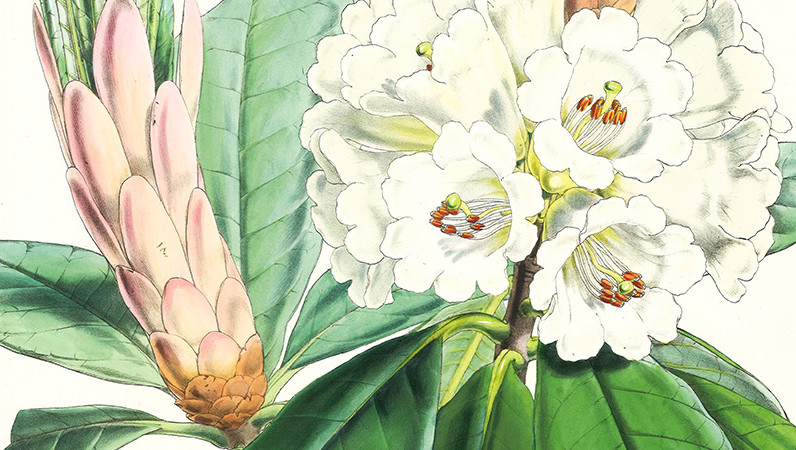
Imaginary Worlds: Storytelling in Pictures & Words
October 13, 2017 – January 12, 2018
The Sayles Gorham Children’s Library and Philbrick Rare Book Room at the Providence Athenæum present an exhibition showcasing the Old Juveniles Collection of Children’s Literature and the great talent of generations of artists and authors who give children windows to worlds they could only imagine.
Titles exhibited include:
Cinderella, or the Little Glass Slipper, by Charles Perrault, [American, circa 1840]. Originally published in French by the author in 1697.
Gulliver’s Travels, by Jonathan Swift, London, 1726.
Alice’s Adventures Under Ground, by Lewis Carroll, London, 1886. A facsimile of the original manuscript book afterwards developed into Alice’s Adventures in Wonderland with illustrations by the author.
Winnie-the-Pooh, by A.A. Milne. Illustrated by Ernest Shepard. First American edition. New York, 1926.
Le Petit Prince, by Antoine de Saint-Exupery. Illustrated by the author. First edition. New York, 1943.
Other books include Babar, the Velveteen Rabbit, Goodnight Moon, Where the Wild Things Are, Madeline, Eloise, and Curious George.

Of Classic Proportions: The Building of the Providence Athenæum
June 30 – September 23, 2017
In 1836, the Providence Library Company (1753) and the Providence Athenæum (1831) made the decision to dissolve their institutions and reform as the library we know today as the Providence Athenæum. Since 1838, the library has occupied its stately home on Benefit Street, bearing witness to almost two centuries’ worth of the hustle and bustle of the city of Providence.
This summer, take a walk up the Athenæum’s granite steps and wander down to the Philbrick Rare Book Room to learn all about the history of the building itself: from conception to construction. The exhibition includes photographs, manuscripts, and architectural drawings from the Athenæum’s archives.
The edifice, you are aware, is to occupy a central and commanding site. It is to be fashioned after a Grecian model, with a granite front and fluted columns of the same material. When completed, it will be hailed as an accession to those monuments of taste and munificence which already adorn our city. It will, after all, prove but a splendid failure if this Corporation and the public spend a fruitless enthusiasm upon its classic proportions, instead of carrying forward with renewed and concentrated energy, the high objects to which it is dedicated.
The Board of Directors & Building Committee, 1838

Botanical Treasures: The Art & Science of Flower Prints
March 31 – May 31, 2017
“The illustration stands as a substitute for the thing itself, which is ephemeral, fragile, and often unable to survive removal from its original environment.”
Picturing Plants: An Analytical History of Botanical Illustration, by Gill Saunders
Represented deep within the Philbrick Rare Book Room are several masterpieces of botanical illustration from the 18th century to the library’s latest acquisition published in the 21st century. Printing techniques from engraving to digital photography are portrayed through three important folios in the Natural History Collection including Albertus Seba’s Cabinet of Curiosities (1734-1765), Victoria Regia (1854), and The Mexican Orchids of C.G. Pringle (2016).
To enhance the viewer’s experience, a selection of botanical specimens collected by Athenæum members in the 19th century will be on loan from the Brown University Herbarium. These plant specimens provide a visual reminder of what botanists collected and studied to document and illustrate the flower prints on display.
Salon: Botany at Brown: Past, Present, and Future with Tim Whitfeld, Collections Manager/Assistant Professor, Brown University Herbarium. March 31, 2017. Listen to a recording of the Salon here.
Essay: “Botanical Treasures: The Art & Science of Botanical Flower Prints,” Universal Penman
Further reading: Natural History Bibliography of the Providence Athenæum
Pictured: Joseph Dalton Hooker, The Rhododendrons of Sikkim-Himalaya (London, 1849-51)

The Scotch Bard: Robert Burns as Poet & Person
January 25 – March 22, 2017
An exhibit featuring works of poet Robert Burns from the Athenæum’s Bradley Collection
Gallery Guide
Robert Burns was a Scottish poet and lyricist. He is regarded as the national poet of Scotland, is best known for writing in both the Scots and English languages, and is considered a pioneer of the Romantic movement. Burns’ work celebrates the Scottish folk tradition and the universal themes reflected in the daily life of the average 18th century Scotsman. For this, he was admired by many and achieved great fame during his lifetime. To this day, his work continues to be read and his life celebrated.
Charles Bradley was a lifelong member of the Athenæum and a great enthusiast of Burns. In 1920, his wife Jane presented her late husband’s collection of 450 books by and about the Scottish poet to the library. His virtually comprehensive collection includes many rare and early editions of Burns’ works.
A selection of works from the Providence Athenæum’s Robert Burns Collection is on display through March 22nd. Also on view will be The Works of Robert Burns, owned and annotated by Walt Whitman and kindly loaned to the Athenæum by Susan Jaffe Tane (pictured above). This extraordinary volume, containing Whitman’s own notes and clippings, has not been publicly exhibited since it entered Andrew Carnegie’s personal collection over a century ago.
Thanks to the following contributors and supporters of the exhibition:
Susan Jaffe Tane, exhibit sponsor
Linda Thorell Hills, great-granddaughter of Andrew Carnegie
Karen Karbiener, Whitman Scholar, New York University



